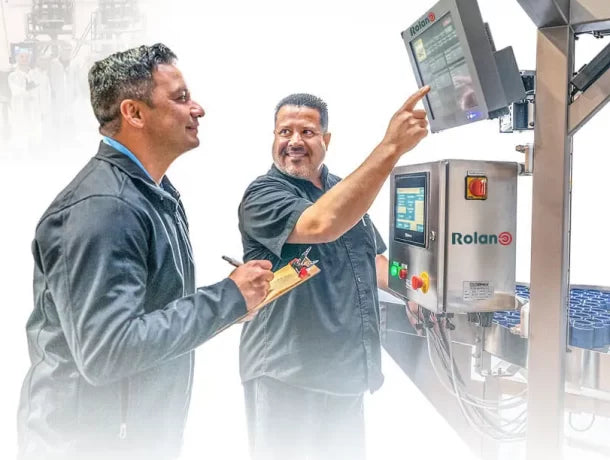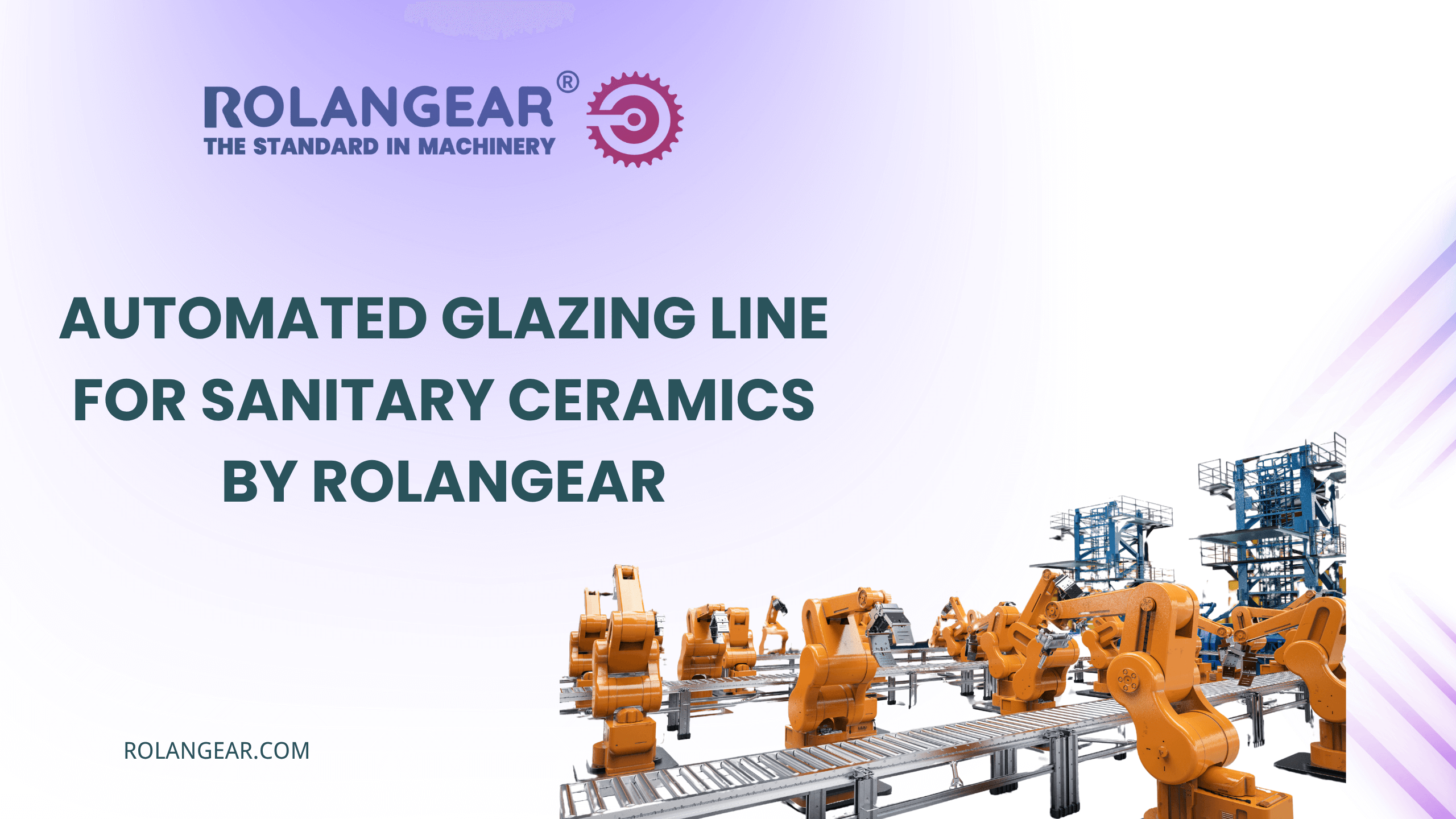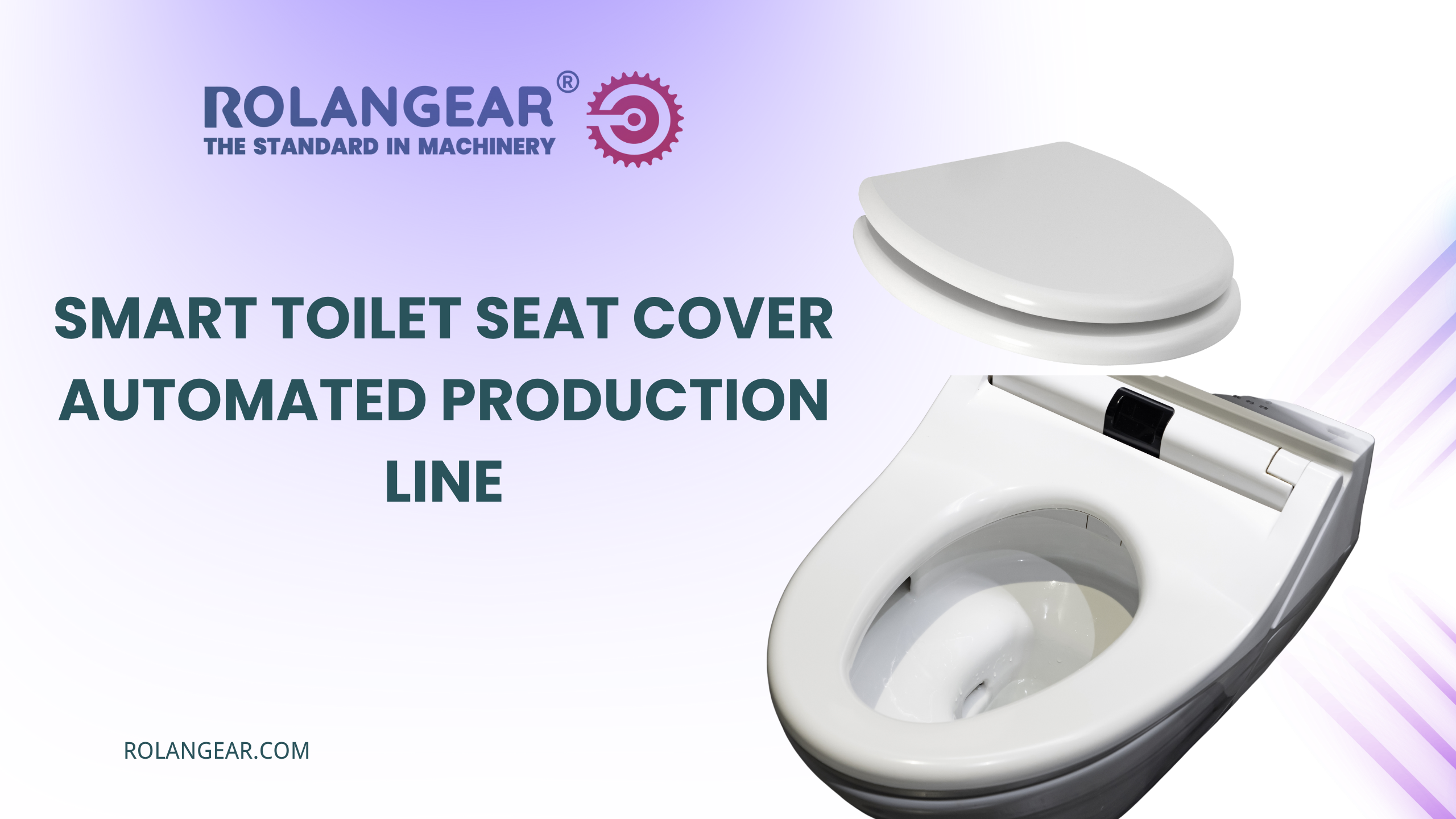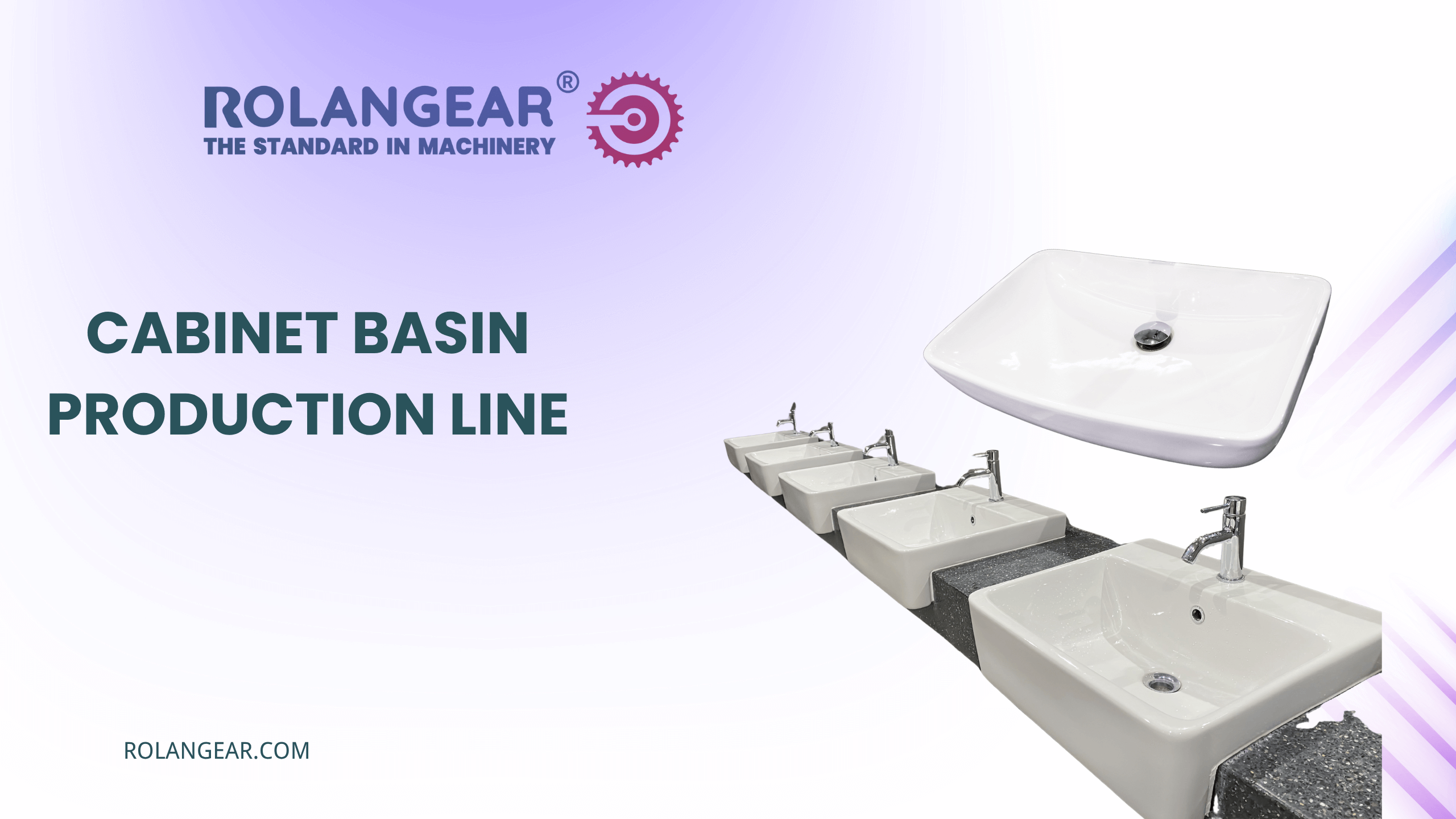Automated Glazing Line for Sanitary Ceramics by Rolangear
Robotic Automated Glazing Line for Sanitary Ceramics by Rolangear
Introduction to Glazing Methods in Sanitary Ceramics
At Rolangear, we specialize in advanced glazing technologies for sanitary ceramics, employing three main glazing methods widely used in the industry: spraying glaze, dipping glaze, and pouring glaze. Each method serves specific product needs and ensures optimal coating quality.
1. Spraying Glaze Method
The spraying glaze technique uses compressed air or centrifugal force to atomize the glaze slurry into fine droplets emitted from a spray gun. These droplets settle or splash onto the carefully finished ceramic green ware, coating only the intended areas. This method is known as spray glazing.
Spray glazing remains the most popular method in sanitary ceramic production. Historically performed manually, the process has evolved significantly with the introduction of robotic spraying arms and electrostatic glazing systems. These automated solutions improve precision, efficiency, and environmental conditions on the production floor.
2. Dipping Glaze Method
Dipping glaze involves immersing the finished ceramic piece into a container filled with glaze slurry. When lifted, glaze adheres to the targeted surfaces, providing an even coating.
Key parameters for dipping glaze include the slurry’s specific gravity—typically 1.42 to 1.44 for transparent glaze and 1.45 to 1.46 for milky glaze—with immersion time adjusted based on product characteristics.
Before dipping, non-glazing areas are coated with molten wax to prevent glaze adhesion. Post-dipping, glaze must be removed from areas that contact kiln supports, such as the base of water tanks, to avoid defects caused by sticking during firing.
Glaze slurry containers can be wooden or concrete pools. After daily dipping operations, leftover slurry is filtered (using a 120-mesh sieve) and de-ironed before reuse, ensuring consistent glaze quality and reducing waste.
3. Pouring Glaze Method
Pouring glaze is mainly applied to larger or internally glazed products. The item is placed on a rotatable frame, and glaze slurry is poured into curved pipes that contact the product’s interior surfaces. Once drained, the inner wall is coated uniformly with glaze.
Rolangear’s Robotic Glazing Technology
Rolangear’s robotic glazing solution automates the spraying glaze process, featuring a comprehensive system composed of a green ware transfer line, a rotatable holding platform with adjustable angles, spray guns, and an intelligent control system.

Types of Robotic Spray Systems
-
Teaching-Type Robots: Operated initially by skilled workers who manually guide the spray gun to cover the entire piece. The robot then records this operation sequence, enabling subsequent automated runs replicating the exact process.
-
Programmed Robots: Require specialized programmers to input detailed spray parameters into the control system. The robot executes glazing automatically based on this programmed data.
Precision and Control
The robotic spray arm performs six-axis movements with repeatability errors under 0.1 mm. It controls the rotation of the green ware clamp to position the piece accurately. The robotic arm moves dynamically around the ceramic, ensuring even glaze application.
Operators manage the system via control panels, simply inputting product codes that trigger automated control over green ware positioning and spraying.

Advantages of Robotic Spray Glazing
-
Maintains glaze atomization and deposition principles consistent with manual spraying.
-
Improves operator safety by distancing personnel from spray booths.
-
Provides stable glaze quality with minimal variation between products.
-
Reduces physical labor and significantly increases production efficiency.
-
Typical manual spray output: 100–120 pieces per worker per shift.
-
Robotic spray output: 400–700 pieces per line per shift.
Considerations
Robotic glaze systems require substantial initial investment and technical expertise. The quality of glaze depends heavily on appropriate programming. Product changes necessitate updating the robot’s spray programs.

Advanced Features: Automatic Shape Recognition and Targeted Glazing
Rolangear’s robotic systems can integrate with shape recognition devices storing common green ware profiles. When a piece is identified, the system automatically selects optimal spray parameters.
Combined with anti-backflow automatic glaze applicators, the system can address traditionally hard-to-glaze areas like the bottoms and backs of curved surfaces, ensuring full coverage without manual intervention.
Conclusion
Rolangear’s robotic automated glazing line represents a leap forward in sanitary ceramic manufacturing. By combining precision engineering, flexible programming, and advanced control systems, it delivers enhanced production capacity, consistent quality, and improved working conditions, positioning manufacturers for greater competitiveness and sustainability.






